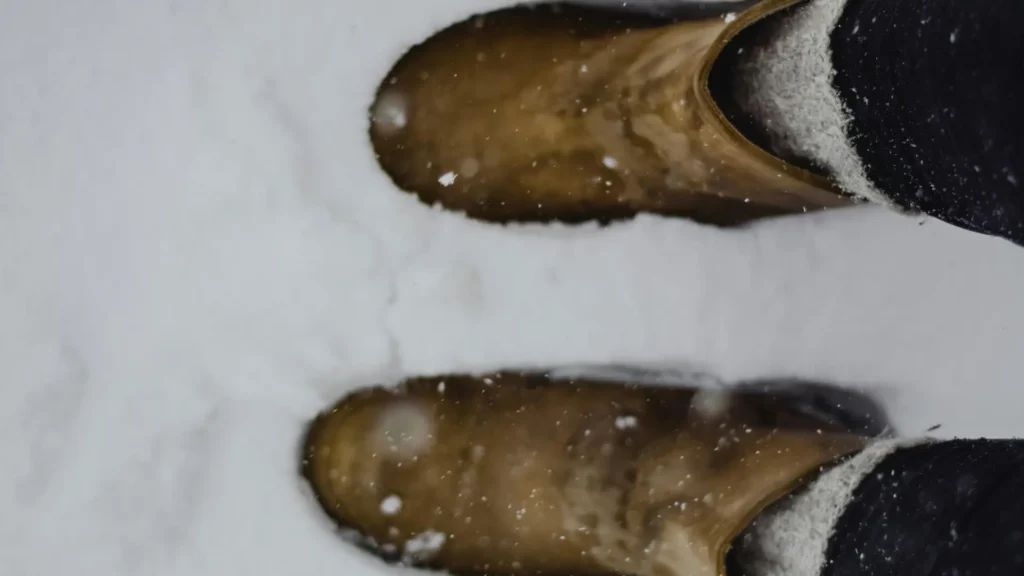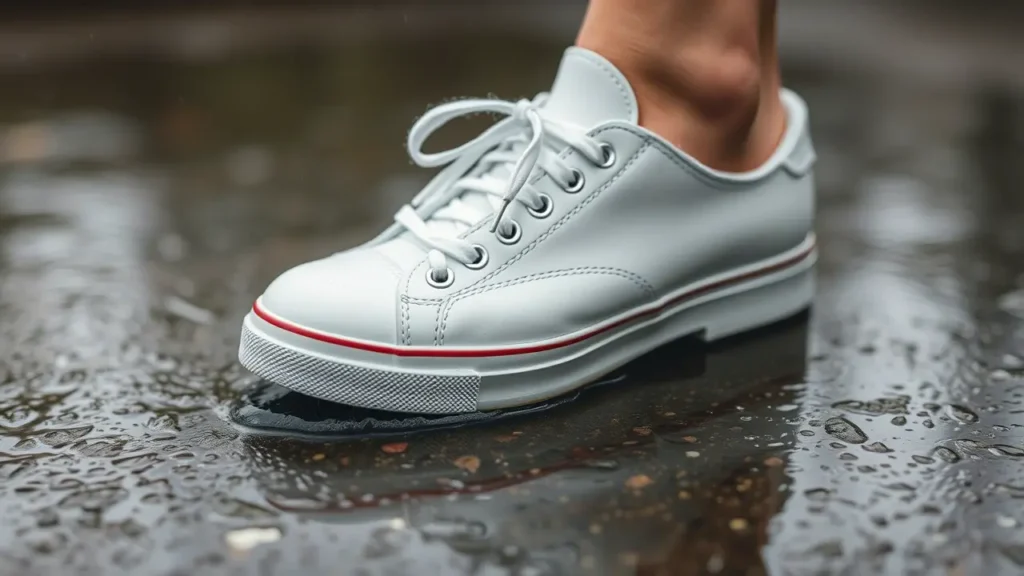While a sturdy pair of boots can fend off the cold to an extent, layering socks with your winter shoes is a game-changing trick to lock in heat. Done right, this simple technique can transform a brisk day into a cozy stroll. Here’s how to master the art of sock layering for maximum warmth this winter.
The Basics of Sock Layering with Winter Shoes
Layering socks is a strategic way to trap heat, wick moisture, and cushion your feet against the chill. A single thick sock might feel cozy at first, but it can leave gaps in insulation or lead to sweaty feet.
By combining thinner layers, you create a system that works smarter. Plus, it’s a budget-friendly hack. You do not need to splurge on high-tech heated gear when you’ve got the right socks and know-how.
Layering socks for winter warmth is both an art and a science. This technique works well in selecting the right materials, thicknesses, and fit. When done correctly, it’s like building a custom thermal shield for your feet. Here’s a detailed breakdown of the essentials:
Base Layer
Your first line of defense is a thin, moisture-wicking sock that acts like a second skin. Socks made of merino wool, and bamboo are ideal because they excel at pulling sweat away from your feet.
Merino wool stands out for its softness, natural temperature regulation, and odor-fighting properties. Bamboo offers a sustainable, silky alternative, while synthetics bring durability and quick-drying perks.
This layer should be lightweight and form-fitting. Avoid cotton at all costs. It absorbs moisture like a sponge and holds it.
Insulating Layer
The second sock is your warmth warrior. This is designed to trap air and hold heat close to your skin.
Opt for a thicker option made of wool—merino or alpaca for luxury, or a wool-fleece blend for affordability.
These materials are champions at insulation. Their fibers create tiny pockets of air that act as a barrier against the cold.
Alpaca wool is hypoallergenic and exceptionally warm, while fleece blends add plush softness. The sock should be snug enough to stay in place but loose enough to glide over the base layer without bunching.
Look for pairs with a bit of elasticity to hug your calves.
Shoes as the Final Layer
Your winter shoes complete the equation, serving as the outer shell that locks in warmth and shields against wind, snow, and slush.
The trick here is fit. Your shoes need enough room to accommodate two socks without compressing your toes. A half-size-up shoe works best.
This three-part system mimics layered clothing: the base manages moisture, the insulator provides warmth, and the shoe protects and stabilizes. Get these basics right, and you’ll be ready to layer like a pro.
Best Combinations for Different Winter Shoes

Layering socks with winter shoes is all about pairing the right sock duo with the right footwear. Each style has its own quirks and space constraints. These tailored combinations maximize warmth, comfort, and a touch of style. Here’s how to match your socks to your winter shoes for the coziest results.
Ankle Boots: Pair a merino base layer with a mid-weight wool sock. Ankle boots, with their shorter shafts, leave a little leg exposed. Start with a thin merino wool sock. Its natural breathability keeps your feet dry without adding bulk.
Over that, add a mid-weight wool sock for insulation. The shorter shaft offers a chance to play with style. Choose a colorful outer sock or one with a subtle texture to peek out above the boot.
This combination adds flair to your outfit. This works brilliantly with leather Chelsea boots and suede lace-ups. If the boots are unlined, lean toward a slightly thicker mid-weight sock to compensate.
Knee-High Boots: Use a thin synthetic base and a calf-hugging wool sock. Knee-high boots are built to trap heat higher up your leg. They amplify the layering effect.
Begin with a lightweight synthetic sock. Polyester or polypropylene blends dry fast and fit sleekly under the taller shaft. Then, layer on a plush wool sock that extends to your calves, hugging them snugly to seal in warmth from ankle to knee.
The thicker outer sock adds a cushy barrier against the cold, while the boot’s height ensures no drafts sneak in. This combo shines with riding boots, glossy patent styles, and slouchy suede designs. Pair them with tights for a sleek silhouette.
For extra coziness, opt for a wool sock with a brushed interior. It’ll feel like a warm hug against your skin. Avoid overly bulky socks here. Taller shaft can handle some thickness, but too much bulk might make zipping or pulling on the boots a struggle.
Winter Sneakers: Stick to a lightweight wool base and a thinner fleece sock. Sneakers have less room, so avoid overloading. Winter sneakers are less forgiving than boots. A streamlined approach is key here.
Start with a thin merino wool sock for moisture control. It’s warm but won’t crowd the shoe. Then, add a thinner fleece sock to provide insulation without turning your sneakers into a vice. This duo keeps your feet toasty for urban treks.
Stick to ankle-height socks to avoid bunching at the tongue, and test the fit. Your toes need wiggle room, otherwise you’ll lose circulation. For a pop of personality, let a patterned fleece sock peek out of high-tops to turn a practical choice into a street-style win.
Snow Boots: Go bold with a moisture-wicking liner sock and a heavy-duty thermal sock. Snow boots can handle serious sock layering. They are your heavy artillery against brutal winters.
Kick off with a thin, moisture-wicking liner sock to keep sweat at bay during active days. Then, pile on a heavy-duty thermal sock. Choose merino or alpaca, a wool-fleece hybrid, or a double-layered expedition sock designed for subzero temps.
These beefy socks fill the boot’s generous space. They create a fortress of warmth that laughs in the face of blizzards. This combo thrives in rugged styles like Sorel Caribous or Columbia Bugaboots. For extreme cold, consider a thermal sock with built-in cushioning. It’ll double as a pillow for your soles. Just ensure the boot’s roomy enough to avoid compression.
Pro Tips for Extra Warmth and Comfort
Material Matters: Wool reigns supreme for its warmth-to-weight ratio, but synthetics are great budget alternatives. Silk liners add a luxe touch for extreme cold.
Avoid Overstuffing: Too many layers can compress your feet. This can reduce circulation and insulation. Two well-chosen socks beat three haphazard ones.
Dry Feet First: Start with dry feet and fresh socks. Dampness is the enemy of warmth. Keep an extra pair handy for long days out.
Style It Up: Let the outer sock peek above your shoes for a cozy-chic look. Pair with a midi skirt to show off patterns.
Rotate and Refresh: Wash socks after each wear to maintain their wicking power, and air out your shoes to prevent moisture buildup.
Why It Works
Layering mimics the science of winter clothing: multiple thin layers trap air better than one bulky piece. The base sock keeps your skin dry, the insulating sock holds warmth, and your shoes act as a windproof shell.
It’s like a mini sleeping bag for your feet—perfect for subzero temps. Plus, it’s customizable: tweak the combo based on the day’s forecast and your activity level.
Imagine stepping outside on a blustery morning, wind howling, snow crunching underfoot. Your toes stay toasty, your calves feel snug, and you’re not waddling in oversized gear.
Back indoors, peeling off your shoes reveals a stylish sock duo that’s kept you warm without a hitch. Layering socks with winter shoes isn’t just practical. It’s a small victory against the cold, leaving you free to enjoy the season.
Keep your sock drawer stocked with a few reliable pairs. Two base layers and two insulators give you options without clutter. Store shoes with cedar inserts to extend their life. Every few weeks, check for wear and replace as needed.
With this setup, you’re ready to face winter head-on, one warm step at a time.




